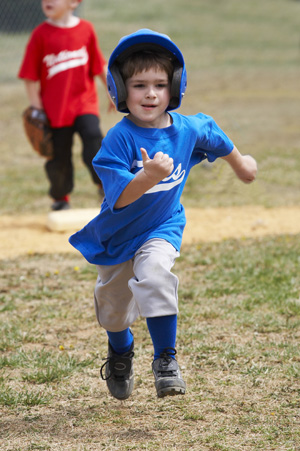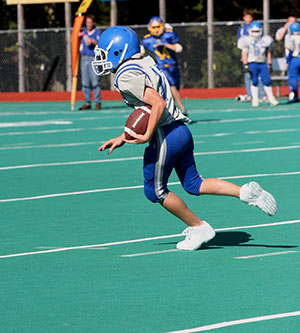Shoulder Pain
At some point in our lives, almost all of us will experience significant shoulder pain. In 2006, 7.5 million people went to their doctor because of shoulder pain. More than half were for rotator cuff problems.
rotator cuff tear indiana, dislocated shoulder indiana, shoulder pain indiana, shoulder treatment indiana, shoulder surgery indiana, shoulder surgeon indiana, rotator cuff tear south bend, dislocated shoulder south bend, shoulder pain south bend, shoulder treatment south bend, shoulder surgery south bend, shoulder surgeon south bend
Shoulder injuries often occur from sports related activities that involve repetitive overhead motions such as tennis, pitching and swimming. Everyday activities like heavy lifting or overhead work can also aggravate the shoulder.
Shoulder problems typically involve the soft tissues such as muscle, tendon or ligament. Most issues can be placed into two major categories, instability or rotator cuff (i.e. impingement).
Swimmer's shoulder
Swimmer's shoulder is a type  of overuse injury. According to Dr. Scott Koehler
and Dr. David Thornson in a 1996 article of The Physician and Sports Medicine,
swimmer's shoulder occurs in 38% to 75% of competitive swimmers. The condition
is a result of overuse, especially in young swimmers whose skeletons are still
developing. Swimmers use a wide range of motion in their rotator cuff. Over
time, this motion tends to cause the soft tissue surrounding the space to migrate
between the head of the humerus bone and the shoulder blade. The child should
rest until symptoms abate and learn to use techniques that limit impingement
of the shoulder during swim exercises. If your child has swimmer's shoulder,
he or she should see a pediatric orthopedic physician.
of overuse injury. According to Dr. Scott Koehler
and Dr. David Thornson in a 1996 article of The Physician and Sports Medicine,
swimmer's shoulder occurs in 38% to 75% of competitive swimmers. The condition
is a result of overuse, especially in young swimmers whose skeletons are still
developing. Swimmers use a wide range of motion in their rotator cuff. Over
time, this motion tends to cause the soft tissue surrounding the space to migrate
between the head of the humerus bone and the shoulder blade. The child should
rest until symptoms abate and learn to use techniques that limit impingement
of the shoulder during swim exercises. If your child has swimmer's shoulder,
he or she should see a pediatric orthopedic physician.
 Little league shoulder
Little league shoulder
Little league shoulder, also called pitcher's shoulder, is an overuse injury. According to the American Academy of Orthopaedic Surgeons, the condition occurs when the arm is extended under high speed frequently. Children with little league shoulder may complain of pain or loss of range of motion and strength. Little league shoulder injury requires rest until completely healed. Children should not return to sports until little league shoulder has completely healed. It is important to seek the care of an orthopedist to treat overuse injuries in children.
Shoulder separation
The AAOS reports that football players often sustain a shoulder separation. However, any child who falls on the tip can separate his shoulder. Shoulder separation (or AC separation) occurs in kids when the shoulder blade and collar bone work away from one another. A blow or overuse can cause this type of injury. The ligaments aligning the joint may be stretched or torn. Your child's orthopedic physician may prescribe a sling, ice, rest and medication. If the clavicle and shoulder blade are completely separated, surgery may be necessary.
Nonsurgical Options
The trend in orthopaedics is for a specialist to exhaust all non-surgical treatment options in advance of surgery. That’s because the more invasive (surgical) the treatment option, the more tissue is disrupted and there is more potential for more complications than with physical therapy or a injection.
So if you are impatient, wanting a quick fix to your problem, keep in mind that the best specialists in orthopedics, sports medicine and spine will first look at if there are non-surgical options for you to try first before surgery.
With sports medicine problems involving strain, sprain or overuse syndrome — non-surgical treatment options like anti-inflammatory medication, injections into a joint space or specialized therapy, can many times provide relief of symptoms without the need for surgery.
Fortunately, most common shoulder problems can be managed successfully without surgery.
Surgical Options
Arthroscopy
Minimally invasive techniques (also known as arthroscopy) and improved tools allow orthopedic surgeons to fix rotator cuff tears usually through 3-4 small incisions, less than ½ inch. The rotator cuff tear is repaired by suturing the torn tendon back to the humerus. Recovery is less painful and scars are less noticeable.
During surgery for a rotator cuff tear, the surgeon removes debris from the damaged shoulder cuff tendon. This is called a debridement and is typically completed arthroscopically. Next, if bone spurs are present, the surgeon will next smooth the acromion area to prevent the acromion from pinching the tendon.
Shoulder Impingement Surgery
This minimally invasive procedure is often performed on an outpatient basis. Shoulder impingement helps relieve pain by decompressing the small enclosed area around the rotator tendon of the shoulder joint. During the procedure, the bursa is removed and the orthopaedic surgeon trims back the acromion bone to allow for normal pain-free motion. In most cases, this procedure is performed arthroscopically.
